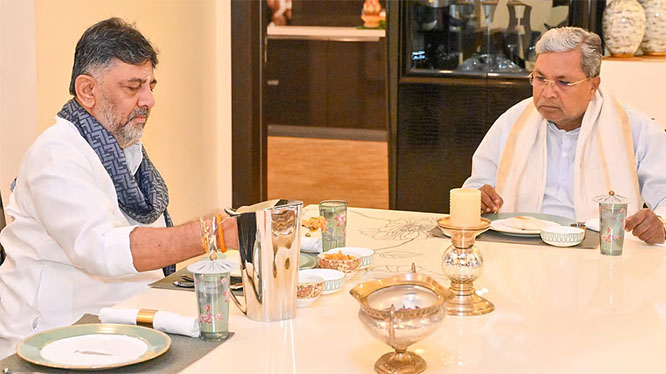
Panaji: The Goa police have found two empty bottles of a cough syrup in a room where the CEO of a start-up allegedly killed her four-year-old son, indicating she might have given a heavy dose of the medicine to him and that it was pre-planned murder, an official said on Wednesday.
The post-mortem has revealed the child was smothered to death either with a cloth or a pillow, as per officials.
The accused woman, Suchana Seth, allegedly killed her son in the apartment at Candolim in Goa and stuffed the body in a bag before taking it to neighbouring Karnataka in a taxi, police said.
She was arrested from Chitradurga in Karnataka on Monday night and brought to Goa on Tuesday.
A senior police officer said that during the inspection of the service apartment room where the woman stayed, they found two empty bottles (one big and another small) of a cough syrup.
"The post-mortem conducted on the body has indicated the possibility that the child might have been smothered to death and there were no signs of struggle," he said.
"We are examining the possibility if the woman gave a heavy dose of cough syrup to the child before putting him to death," the official said.
Enquiries with the service apartment staff revealed the woman had asked them to buy a small bottle of a cough syrup claiming she was having cough, he said, adding the bigger bottle might have been carried by her.
"It looks like a pre-planned murder," the official said.
According to police sources, the accused has denied her involvement in the crime during the interrogation and claimed the child was already dead when she got up from sleep.
"We don't buy her theory. Further investigation will reveal the motive behind killing the child. As of now, we know that she and her husband were estranged because of which she might have done this," a senior police official said.
Seth checked in the service apartment on January 6 and stayed there till January 8 before leaving for Bengaluru in a taxi.
Following her arrest, a court in Mapusa town of Goa on Tuesday remanded her in police custody for six days.
The child's father, Venkat Raman, who was in Jakarta (Indonesia), reached Hiriyur in Chitradurga on Tuesday night and took possession of his son's body after postmortem.
"He was strangled to death or what we call smothering. Either a cloth or a pillow was used. The child died due to strangulation. It doesn't look like the child was strangulated using hands. It looks like a pillow or some other material was used. The rigor mortis (postmortem muscle stiffness) had resolved in the child," Hiriyur Taluk Hospital's Administrative Officer Dr Kumar Naik told reporters.
Seth is the CEO of 'The Mindful AI Lab', and according to her LinkedIn profile, she is an AI ethics expert and data scientist with over 12 years of experience in mentoring data science teams, and scaling machine learning solutions at startups and industry research labs.







Comments
Add new comment